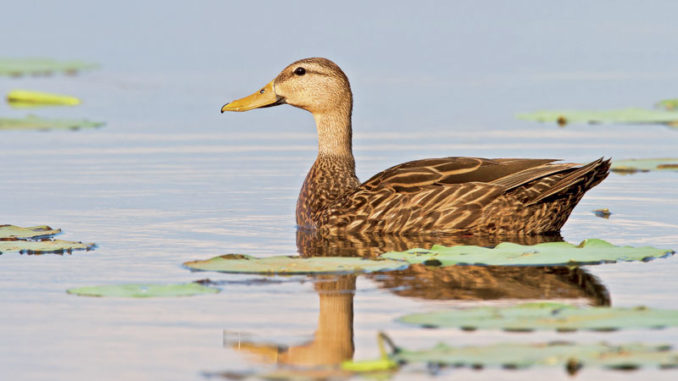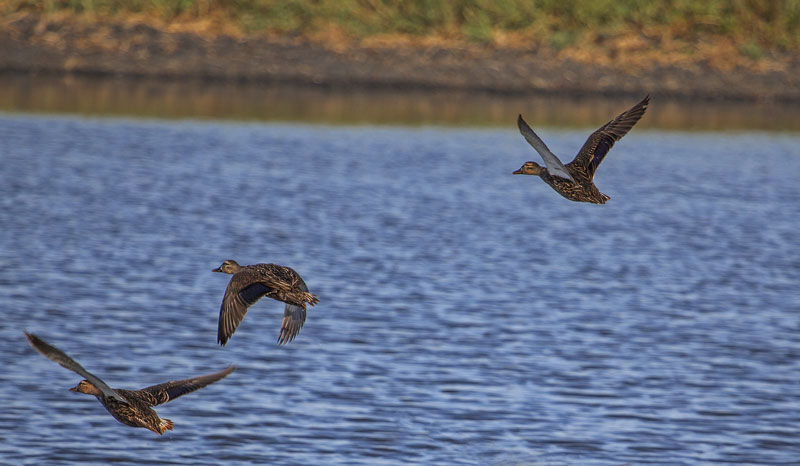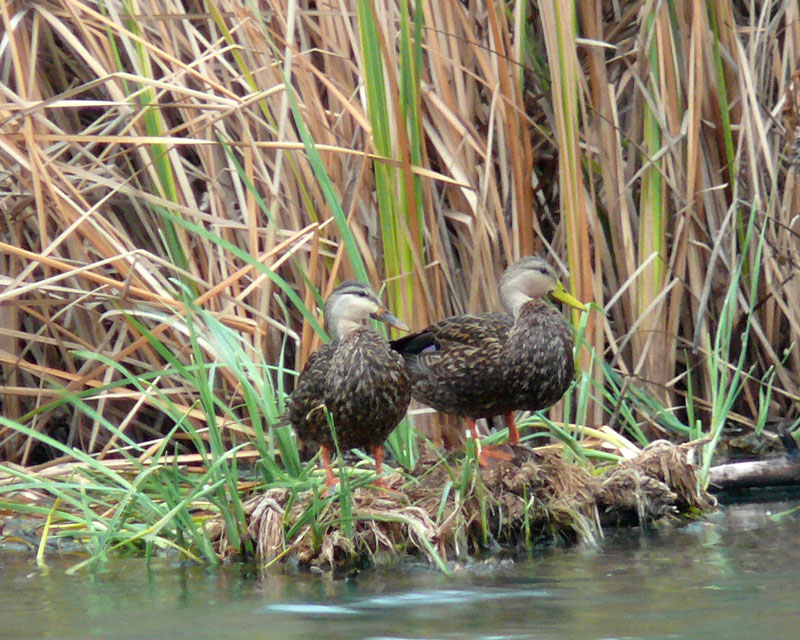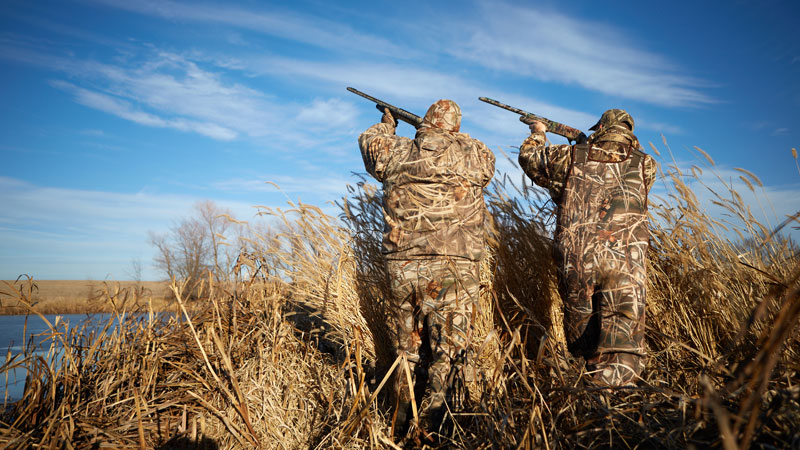
Mottled ducks are Louisianans.
Unlike, teal, gray ducks, mallards, pintails and other common waterfowl that get a break from the heat by returning north every spring, mottled ducks make their homes in the coastal fresh and brackish marshes of the Gulf.
They live a tough life, having to fend off alligators most of the year. When hurricanes come, they hunker down like their fellow Bayou Staters or retreat north temporarily to agricultural fields in North Louisiana. Then, as soon as they start making new friends when the teal arrive in September, the shooting begins for two weeks. A month or so later, it starts again and doesn’t end until the end of January.
Once widespread and abundant across the Gulf, mottled ducks have been in steady decline over the last 50 years with hunting limits reduced to just one bird per day in Louisiana and Texas and the possibility of further restrictions to come. Studies conducted by the US Fish and Wildlife Service and state agencies have shown populations falling by as much as 70 percent.
Hunting is an unlikely culprit.

Habitat indicator
A combination of the loss of freshwater and brackish coastal marshes, an increase in predation from alligators, raccoons and other animals and changes in agriculture practices that have altered grazing practices and turned rice fields into crawfish farms and row crops like sugar cane are the more likely causes.
“The mottled duck is a good indicator of wetland habitat quality,” said biologist and avid waterfowl hunter Chad Courville. “Poor habitat quality for mottled ducks usually translates to poor habitat quality for all other ducks when they arrive here in the early fall and winter.”
Courville, who was a Louisiana Wildlife and Fisheries Commissioner for nearly six years, said figuring out exactly what habitats mottled ducks need is fundamental to recovery. Without knowing what habitats mottled ducks prefer for breeding, nesting, foraging and roosting, it’s difficult to implement adequate restoration strategies or projects.
He’s been working closely with other avid waterfowlers, landowners, policy makers and waterfowl biologists to improve management and identify optimal habitat types. However, mottled ducks have proven one of the most difficult species to track and understand. The birds are harder to count than most migrating ducks because their plumage makes perfect camouflage and finding suitable methods for capture and marking has been very challenging.
“We’ve had a lot of success in tracking other ducks with the latest versions of telemetry units that can follow where the birds go, but for some reason, mottled ducks don’t seem to carry traditional devices very well and don’t seem to behave normally after the devices are attached,” he said. “Add to that, the landscape and the habitat has changed so much over the last 30 or 40 years since the benchmark studies, we just don’t have a lot of good, updated data on these birds to guide decisions. For mottled ducks we need to find better telemetry units and better attachment methods, otherwise we will still be guessing at what they need.”


A special bird
The news on mottled ducks isn’t all bad everywhere in Louisiana. In the few areas like the east side of the Mississippi River from Point a la Hache to Pass a Loutre, the Wax Lake and Atchafalaya Deltas and parts of Southwest Louisiana’s freshwater marshes, mottled duck populations seem to be faring well.
“They’re a very special bird and a lot of times I’ll pass on killing them, especially late in the season, because I know they are struggling across a lot of our coast,” said Capt Ryan Lambert, who guides waterfowl hunts in emergent freshwater and brackish marshes east of the Mississippi River
Lambert, working with Ducks Unlimited and funds from the North American Wetlands Conservation Act, has used around $2 million in the last decade to build approximately 5,000 acres of marsh near Ostrica, replacing large expanses of open water with vegetated mud flats and willow trees.
Terraces designed to slow water flowing from bayous and crevasses connected to the Mississippi River have helped suspended sediments deposit faster aiding the natural wetland building processes.
“It’s like a mottled duck paradise where those projects have been built,” Lambert said. “We saw thousands of them during the teal season this September.”
Unfortunately, one of the sources of the land-building water and sediment near Ostrica, Neptune Pass, is set to be severely restricted by the Army Corps of Engineers due to concerns the widening pass will inhibit shipping. Lambert said the move by the Corps is “short-sighted and a huge mistake.”
The Louisiana Coastal Protection and Restoration Authority and conservation groups like Ducks Unlimited are working with the Corps to find a solution to allow Neptune Pass to continue to flow and build new marsh while keeping the river safe for navigation.
Taking steps
While Lambert and others see positives east of the Mississippi, the story couldn’t be worse for the Barataria and Timbalier Basins decimated by saltwater intrusion and marsh loss.

“There’s a huge effort to try and rebuild as much habitat as we can for all ducks, especially mottled ducks, but you look at an event like Hurricane Ida wiping out 40,000 acres of marsh and it’s difficult to overcome,” said Aaron Pierce, a Louisiana-based regional biologist with Ducks Unlimited. “The aerial surveys conducted for this year’s teal season showed an 89 percent reduction in teal and mottled ducks compared to past years in the eastern parts of Louisiana, likely because of impacts from Ida.”
Pierce said Ducks Unlimited is working with the Louisiana Department of Wildlife and Fisheries, the US Fish and Wildlife Service, the Natural Resources Conservation Service, farmers and landowners to leave more water covering native grasses rather than draining and turning every field for rice, crawfish or sugar cane.
“The Louisiana Department of Wildlife and Fisheries deserves a ton of credit for leading the way to fix the issues that have hurt mottled ducks,” he said. “These are very complex issues that deal with drastic habitat changes, changes in land use by farmers, predators, saltwater intrusion and other difficult things to resolve. But, we are optimistic. We are making progress.”

Additional progress is expected in early 2023 when construction could begin on the Mid-Barataria Sediment Diversion, which is expected to build similar habitat west of the Mississippi River as the terrace projects near Ostrica. Recently passed federal infrastructure bills could provide hundreds of millions for habitat restoration and work with private landowners to turn marginal agricultural lands back into wetlands as well.
“We have to get serious about investing in our waterfowl habitat in Louisiana, managing what we have better and we need targeted research to help guide our decisions,” Courville said. “A lot of Louisiana hunters spend most of their time focused on what’s happening in other states. I say, we can start worrying about what other states are doing once we have our habitat house in order here in Louisiana.
“Outside of what is happening on the breeding grounds of Canada and prairie U.S., the habitat quality and quantity here in Louisiana is critical to our future waterfowling tradition. And for the mottled duck, just like on the breeding grounds to the north, nesting habitat and brood survival are likely limiting factors, but at this point, I am not sure anyone knows with certainty, exactly which habitats we should be focused on. We better figure that out.
“Quickly.”


